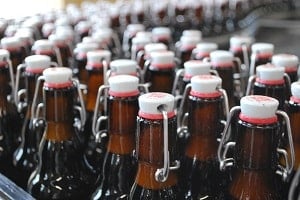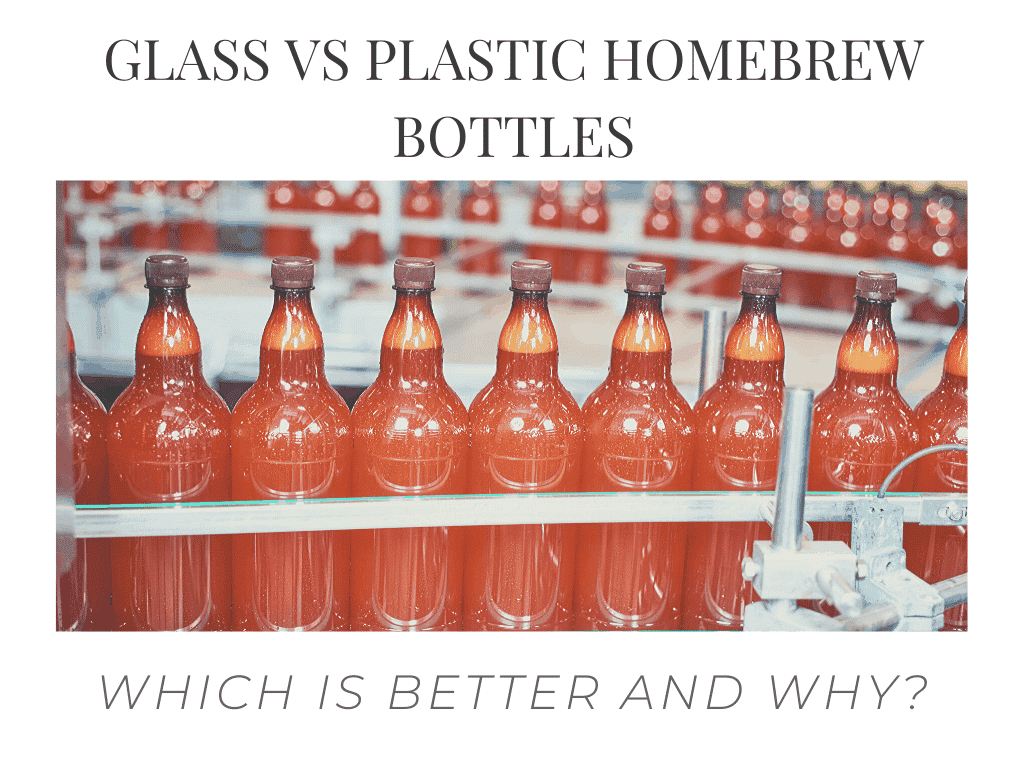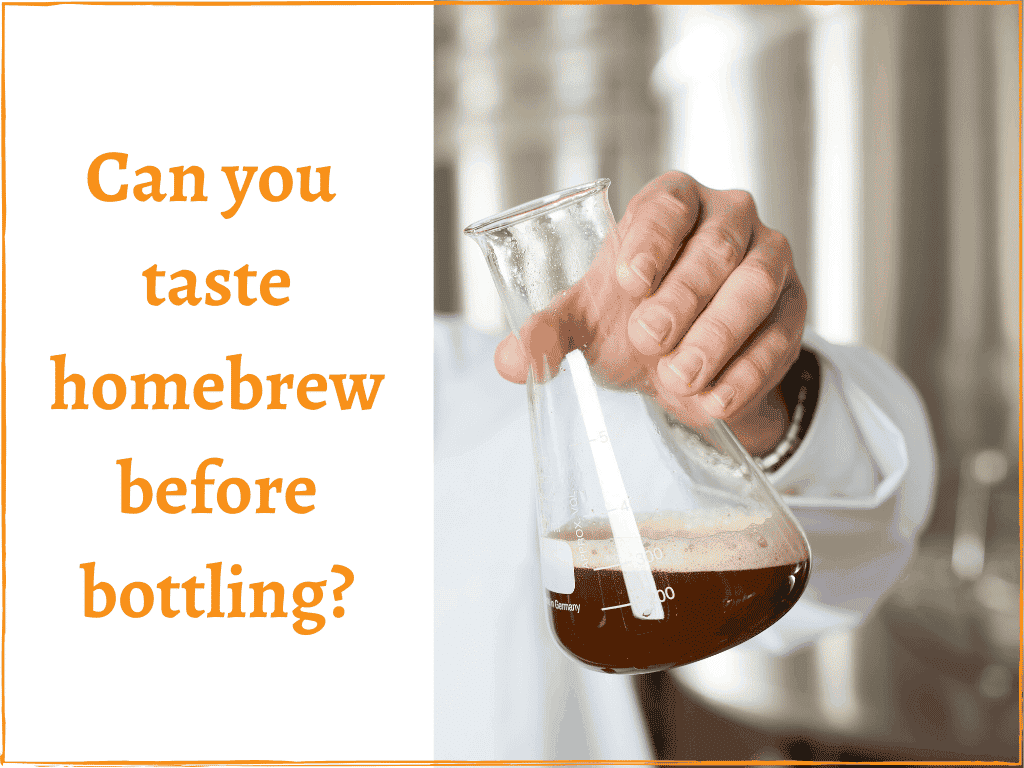Homebrew beer is made up almost entirely of water so the type of water used plays a big role in the final flavor. Many homebrewers wonder if they can just use their tap water to make homebrew beer.
Any potable tap water can be used for homebrewing beer but it likely contains certain chemical compounds, such as chlorine and chloramine, that may create off-flavors or other issues with the flavor of your beer. A water test can indicate any potential issues. Using Campden tablets and water filters can turn tap water into excellent brewing water.
There are a number of ways to prepare your tap water for better brewing. Here, I will discuss some options suited for both beginners and advanced brewers. Whether you choose adjustment or full control, start with a water report and read on.
Topics We Cover
Is it okay to use tap water when making homebrew beer?
Water is the foundational element of your brew. Is any type of water good for brewing? You may be surprised to learn that water plays a great role in your resulting brew. Still, the water that you have at home may be a “solid” option.
The basis of your beer is water, so it makes sense to question the quality. After all, you want the best ingredients for an equally great result. Sometimes, starting brewers overlook this key ingredient and focus on the trio: malt, hops, and yeast. However, water should be assessed first when starting your brew.
Just like when you choose malt or hops for a specific recipe, the type of water contributes (or detracts!) from the result. Water can alter the flavor of your beer, even when you meticulously follow the recipe. For starting and intermediate brewers, you likely have several sources of water. These can be tapped, purified, distilled, and natural (rainwater).
In this blog, we will focus on the first.
How to make tap water better for brewing beer
Although tap water is potable in many places, it is not ideal for brewing straight from the source. Generally, tap water is okay for brewing beer, but may require some “optimization.”
(If you intend to use tap water in a new location, check first that it is safe to drink.)
If you dabble in chemistry, you can conduct a chemical analysis of your tap water. Otherwise, you might just want to request one from your local water department. It can be confusing, even daunting, to try treating your brewing water. There is an entire science behind variations in water and resulting beers.
Let’s keep it relatively simple here. Here are several ways in which you can improve your tap water to promote good flavors and prevent off-flavors.
Be sure to work your way down the whole list!
Test your water for chlorine
Tap water is commonly treated with chlorine.
Chlorine generally dissipates during boiling, but chloramine is much more persistent. To determine the level of chlorine, you can use an at-home kit, such as the Smart Brew Starter Kit by the Exact Store (this will be the last water testing kit you ever need!) or even a more basic kit like this one to get a general water profile.
Or, as I noted before, you can request a comprehensive analysis from your water board.
- COMPLETE WATER TEST KIT – Everything you need to test your water; tests for 16 parameters, ensures lead free and pH safe drinking water; testing tube and dropper included in every kit for easy sample collection
Prices pulled from the Amazon Product Advertising API on:
Product prices and availability are accurate as of the date/time indicated and are subject to change. Any price and availability information displayed on [relevant Amazon Site(s), as applicable] at the time of purchase will apply to the purchase of this product.
Chloride enhances malt sweetness and the fullness of the flavor profile in beer. In many brews, chloride levels should be 40-100 ppm, but some, like the New England IPA, have upwards of 200 ppm. Too much can cause stability and off-flavor issues, even stall fermentation.
Test your tap water for chloramine
Chloramine is added to water to keep bacteria away but can introduce medicinal off-flavors to your brew. Chloramine is a combination of ammonia and chlorine, which react and cause several types of chloramines: monochloramine, dichloramine, and trichloramine. The latter two are volatile and dissipate soon after treatment.
Chloramine has become increasingly popular as a water treatment for several reasons. It is stabler, safer, and longer-lasting than chlorine. To the last point, during disinfection, chlorine produces a by-product called trihalomethanes (THM), which is harmful in higher quantities.
Unfortunately, chloramine does not easily dissipate from tap water and will not go away even after boiling. To remove it, check out the next section.
Dechlorinate your tap water before brewing
To remove chlorine from water, simply boil or let the water sit exposed to air and the chlorine will evaporate.
A popular method of removing chlorine and chloramine is by adding campden tablets, composed of potassium metabisulfite or sodium metabisulphite. These are readily available at most homebrew stores. They contain sulphur dioxide, which cleans out chlorine and chloramines from the water. One tablet can treat up to 75 liters of water, so you probably only need a quarter.
- Campden Tablets (Potassium Metabisulfite) - Approximately 100 Tablets - 2 Ounce Jar
- Some beer brewers also use campden tablets to remove chlorine or chloramine from their brewing water - Also works well as a sanitizer for your wine making equipm
Prices pulled from the Amazon Product Advertising API on:
Product prices and availability are accurate as of the date/time indicated and are subject to change. Any price and availability information displayed on [relevant Amazon Site(s), as applicable] at the time of purchase will apply to the purchase of this product.
Trust me when I say that you do NOT want chloramines in your water – I’ve personally wasted 5 gallons of beer this way!
Test your water for bicarbonate
Bicarbonate is an important component that contributes to the acidity of the mash, especially in all-grain brewing. A low level can cause excess acidity and should be balanced out. In most water reports, bicarbonate levels are noted under alkalinity.
Use a filter on your tap water
Another way to reduce chlorine and chloramine is by using a carbon filter. You can find options in brewing stores or online, like the Eagle Brewing FIL32 Water Filter Kit, by Eaglestar.
The “best” type of filter is subjective. If you decide to use one, choose a filter based on your desired price and water outcome. One brewer recommends using a simple carbon filter and treating the water with a quarter Campden tablet.
In the brewing community, reverse osmosis filters are favored by those looking for optimal control of the brewing water.
Use a reverse osmosis filter
Reverse osmosis filters are more common than you may think. They are built into coffee machines, aquariums, even some faucets. Reverse osmosis is a filtration process, by which water passes through a semipermeable membrane. The filter removes most ions and dissolved solids, such as chlorine, fluoride, and iron. However, the resulting water has few minerals, much like distilled water.
You might think that reverse osmosis filters are expensive to purchase and difficult to install but these days the prices are very reasonable and there are even all-in-one models like this one that offer simple plug-and-play functionality!
- PURE WATER STRAIGHT FROM THE SINK - With a filtration accuracy of 0.0001um, this system efficiently removes contaminants like fluoride, limescale, heavy metals.
Prices pulled from the Amazon Product Advertising API on:
Product prices and availability are accurate as of the date/time indicated and are subject to change. Any price and availability information displayed on [relevant Amazon Site(s), as applicable] at the time of purchase will apply to the purchase of this product.
For intermediate brewers, reverse osmosis water could be the next step in your brewing experience. This type of water offers a “blank” medium, to which you can add the minerals and salts necessary for your style of beer. This calculator is a useful resource for determining the amount of each compound. You should have a small scale that weighs to grams or better, tenths of a gram.
Some beer styles, like Czech lager, benefit from reverse osmosis water. In most cases, you will need to add back some ingredients, namely salt compounds, for other beer styles. If you want to brew with reverse osmosis water, you may want to look for a recipe based on this water. The recipe should include the lacking components, which you can purchase in most brewing stores.
Homebrew Happy Hour provides a simple, “staple” recipe for optimizing reverse osmosis water.
Add one teaspoon of calcium chloride per five gallons of water. For hoppy beer, add seven grams of gypsum in addition to the calcium chloride. Add 75 ppm of calcium, <10 ppm of magnesium, and >50 ppm of sodium. If the mash pH is too low, you may want to add a dash of baking soda.
Add calcium to “soft” water
Calcium is among the most important components in brewing water. As a general rule of thumb, hard is better than soft water for brewing beer. If your water is “soft” or alkaline, it lacks calcium. Your brewing water should have from 50 to 200 ppm of calcium, depending on the type of beer.
The right amount of calcium helps to “harden” the brewing water and to lower the mash pH. In addition, it promotes enzyme activity, encourages protein coagulation, and supports healthy yeast function.
Add salt compounds to the water
Some beer types require more of some minerals than others. For instance, beers with an (intentional) malty profile can even benefit from a small amount of chloride or sodium.
Gypsum, or calcium sulphate, increases water hardness and decreases mash pH. It should be used in moderation, as too much can “dry out” your beer.
Baking soda, or sodium bicarbonate, raises the alkalinity of your mash, particularly in darker malt, as used in stout beer. Dark malts add acidity to your mash, so you want to keep your water neutral or alkaline. Again, use baking soda in moderation, lest your beer becomes salty.
Calcium chloride, like calcium sulphate, reduces your mash pH, resulting in a dryer beer. It also improves enzyme activity, facilitating protein coagulation during boiling and flocculation during fermentation. As with calcium sulphate, a little goes a long way. Most lagers require a low level of calcium. Too much can result in an excessively dry flavor profile.
Alternatives to tap water for brewing beer
There are alternatives to tap, such as distilled and purified water. Distilled water is generally not recommended for brewing beer because the distillation process strips important minerals from the water. Some of these minerals are vital in later stages, such as fermentation.
That said, some use distilled water with malt extract, because the extract contains the necessary minerals. The method seems to be relatively uncommon, given the extra steps required to distill water.
For those wondering about “all-natural” water, I would recommend against it. Collected rain or stream water can be filled with various contaminants, like micro-organisms or pollution. These are certain to introduce off-flavors, at least. Some of these could be unsafe to ingest.
Purified water (of “bottled” water) is a great alternative to tap water. When sourced from a natural spring, this water has all the necessary minerals in brewing.
Filtering the key points
There are several methods, as discussed above, which generally improve tap water for brewing beer. If you choose to become more involved in water treatment, note that the steps vary based on your desired result.
Start simple.
Check the composition of your water. Then, read up on components complementary to different styles of beer.
You can reference this nomograph to help identify styles of beer better suited for your water type. From there, you can avoid styles incompatible with your tap water. If your current brew exhibits off-flavors, you should check the report for imbalanced components.
Alternatively, you can add ingredients to accentuate desired flavors in your brew. For instance, you can try adding some gypsum to your mash to accentuate the flavors in a hoppy ale.
A little can go a long way. Understanding the basics of water composition can make a big difference in the quality of your homebrew.








